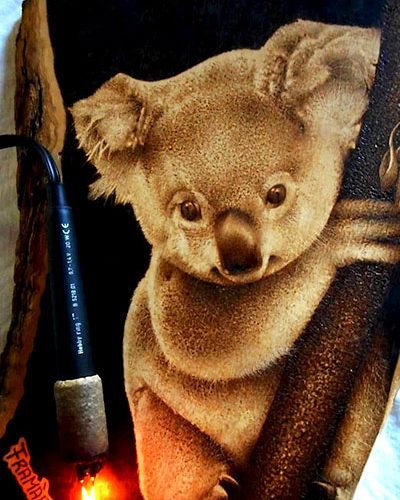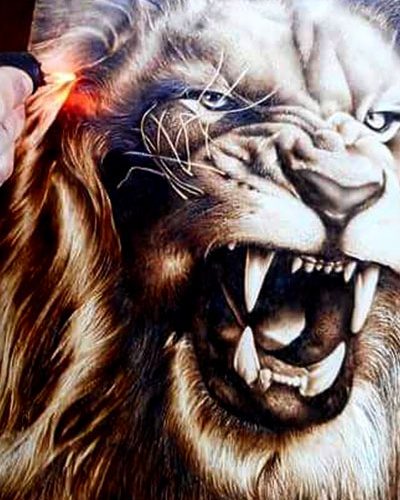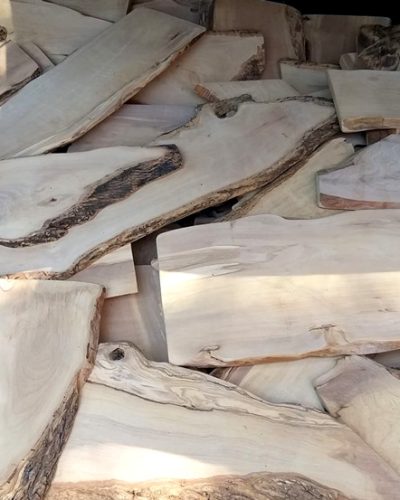PYROGRAPHY: EVERYTHING YOU NEED TO KNOW TO GET THE BEST START

I’ll explain what pyrography is for me: if I had to enclose everything in one term I would use the word “discovery”. What distinguishes pyrography is not the fact that you “can’t make mistakes” as I often hear or read on the web. Other techniques also have this peculiarity! The distinctive aspect is the interaction (absolute, continuous and always different) between the support and the pyrograph.

Pyrography: the technique
Each corner of the support, independently of itself, will respond in a different way to the streeses given by the heat. This makes the technique tryly stimulating because every momento can represent a discovery. Approaching pyrography as a designer, i cannont fail to underline that the variabiles that influence easch step are not linked to heat regulation alone because on the same level of importance there are others such as the type of support, the speed of movement, the lightness and therefore the pressure that we are going to put (more or lesse deliberately) in the hand and in the instrument and conseguently varying the way in which it will affect support. With all athese variables, “getting to know each other artistically” becomes decisive; with this i mean getting to the point of starting to manage and control all the variables themselves, trying to let fo of the sensations and trying to perceive how the support will respond to put processing. We are the ones who mus adapt to the support and not impose ourselves. I am self-taught and have always believed that our best teacher is error.

The wooden support: solid or plywood?
When purchasing solid wood supports, we will have to deal with 2 aspects: one aspect that will vary quite a bit is the economic one (compared to the costs of plywood). Another aspect is linked to the fact that each block that we work on must have an optimal seasoning process that makes it, as they say in the jargon, “firm”. This seasoning, capable of bringing our support to be ready for processing, is of vital importance because otherwise the processed support may subsequently undergo deformations or splitting processes. When working with blocks we will find ourselves interacting with supports that will respond much more slowly to heat. This may or may not bring positive aspects, for example for those trying to obtain light shades, there will be more time available to obtain them precisely because the support will react much more slowly to the heat. However, this will also happen when we try to obtain effects such as completely dark backgrounds which will require a certain control and lightness to try to burn only the most superficial part of it trying to obtain a compact and homogeneous effect.
Pyrography: which media to choose?
Solid lime wood: represents one of the ideal supports for pyrography. It is compact and can be found in shades ranging from yellowish to almost completely white (in this case it will be solid lime with light or white veins). It has grains that interact differently than that of plywood, but are still more manageable than other blocks that will follow.
Solid maple: more expensive than solid lime and more compact and will therefore need to be worked at higher temperatures. Even for solid maple, the grain (less linear in shape than that of lime and often rounded) can be faced with a certain serenity.
Solid alder: if well seasoned and with a clear grain, it has excellent compactness and represents an ideal support for any pyrography artist, regardless of the work he will create.
Solid birch: it has characteristics very similar to that of alder with a variation in shade that makes it slightly less light. This is also an optimal support
Solid olive tree: this type of support is among those I use most but some distinctions need to be made. The olive tree that we most easily find on the market is the veined one. We often see it used for various objects, tools, cutting boards, etc. Clearly, if what we are trying to obtain from our workmanship is an effect that is close to the realistic one, it will be necessary to find light-grained olive blocks. The area of the olive tree from which clear parts are most easily obtained is the sapwood. In this area the grain is wider and therefore light or less grained boards can be obtained from the cut. From this it follows that to be able to find light olive trees of a certain width it will be necessary to find them from plants that have a certain size. In reality, finding this type of olive tree is complicated for many other reasons. The essence that is most sought after is the veined one and this makes the parts of the plant with light veins real waste areas often transformed into pellets. Few suppliers will be interested in seasoning light olive wood naturally and for years (at least 5/6) given that the market then requires veined olive wood. Once we have found a light olive support we will find ourselves working with an essence with an inebriating smell, capable of giving great satisfaction but also of hiding pitfalls which, as mentioned above, are what most attract me to pyrography. The support is compact, it will however have some grain which will have little impact from an aesthetic point of view but which will continuously interact with our workmanship.
These are the wood essences that I have most often used. I don’t treat the works I create with any product. This is for a simple reason. An essence that enters the wooden support (especially in the olive tree) changes its tone and consequently would change the impact of the work itself. The higher the level, the more you will be able to obtain very light effects but not only that… for example I use the pyrograph when turned on but also when turned off and use the tip to scratch the wood, remove material and create other variations and impacts. I don’t advise you against doing it if you want to try but I tell you that in this aspect following Framàr could create problems; one above all: the same effect could be achieved with tools such as cutters, avoiding ruining the tip of the pyrograph or, even worse, the nib. You might rightly ask me “so…why don’t you use something else instead of the pyrograph?” simple, for me drawing has always been a game, a challenge with myself and in this challenge I have always liked to “complicate my life” because the more I have fun the greater the possibility that the resulting work will satisfy me.
